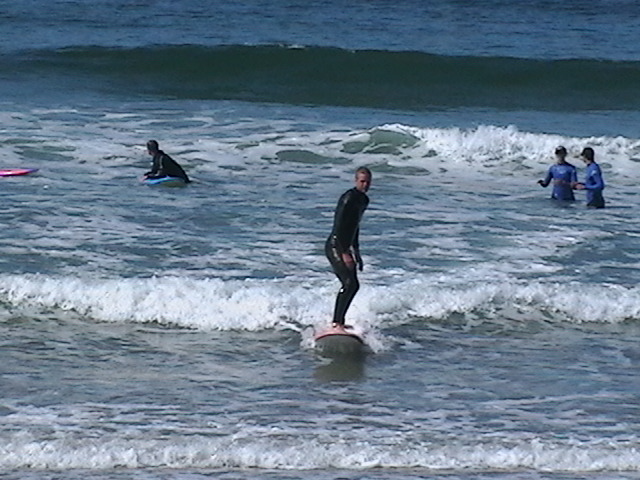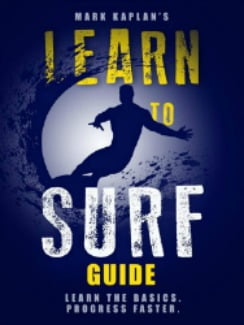Catching Waves on Soft Top Board
Catching waves on the soft top board is fun in foam and green waves. The soft top is a good size for beginners to intermediates to learn beginner to advanced skills.

Catching Foam Waves
Surfing begins with catching foam waves on a soft top board. The reason is a foam wave will push a soft top and not a short board. The soft top board is easier to catch waves, paddle, and ride. Learning the fundamentals, you do not want the board to be a problem.
The beginner rolls over on the soft top board as the wave is 25 feet away. He starts paddling for momentum. When the wave is 4 feet away, he begins to paddle hard. When the wave hits the tail of the board, it is crucial to continue paddling for at least three more strokes until the board is in front of the wave and the tail is out of the foam.
Caching Real Waves on the Soft Top Board
After learning the basics in catching foam waves and riding easily to the beach, the surfer can start paddling out to catch bigger foam waves and the smallest real waves. Real waves have to be caught in the arc, so the timing is much different than foam waves.
The surfer wants to paddle along side the real wave as it is forming watching to see where it will break. Then he turns toward shore and allows the wave to come under the board. When the wave lifts the tail, the surfer paddles hard three times and pops up.
Some Techniques for Catching Real Waves
If the real waves are gentle, it is easy to pop up and ride down the face. If they are steep and closing out, most surfers will paddle and then point the nose of the board toward the pocket before popping up. This puts the board into the pocket quicker before the wave collapses and minimizes pearling.
A great beginner technique is to catch waves at the corner where there is less steepness and power. The surfer paddles away from the apex where the wave breaks first and paddles into the wave at a 45 degree angle towards shore. When the wave lifts the board, he paddles hard and he is already in the pocket.
Maneuvering the Soft Top Board
The surfer rides a foam wave straight to the beach. On a real wave, he gets into the pocket with a bottom turn or by driving straight into the pocket and just rides the wave until it runs out of steam.
The first maneuver would be a cut back where the surfer reverses direction to get back to power or turns to the beach to perhaps catch the next arc of the wave on the way to the beach. Then the surfer learns to accelerate by pushing the nose of the board up and down the face to gain speed. The bottom turn is used to get from the face into the pocket, from the pocket over the top to escape, and up the face to do a trick.
For Oceanside Surf Lessons, see the Home Page
See the Post Search Lessons Teach Fundamentals
See the Post Catching Real Surf Waves
See my Dry Land and in Water Demo video
See my other Surf site for more Posts
I have lowered the price of Courses and Books for the lock down
My New Surfing Course in an E-Book or Paperback plus Demo Video
Get the 18 Chapter, 7,500 word Course that can prepare you for a lesson or give you the fundamentals if you are going to try it on your own. 10 years of teaching 350 students a year has given me the insights on the most precise measures you must follow for success. This course is what I teach on the dry land and in water instruction. The Course includes a 15 minute video on my dry land and in water demonstration. Only $4.95
Buy the E-Book and start learning $2.99. Learn to Surf
Buy the Paperback on Amazon $6.95

I have books on Creating Your Own Happiness on a site called Happiness and Work Life Balance
![Surf Instructions Beginner to Advanced: Learn to Ride Waves by [Kaplan, Mark]](https://images-na.ssl-images-amazon.com/images/I/51HswFtoBQL.jpg)
Buy my E-book on Amazon Kindle for $2.99. 80 pages of beginner to advanced instructions to help you before the first lesson to learning expert techniques and tricks.